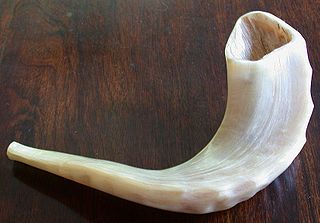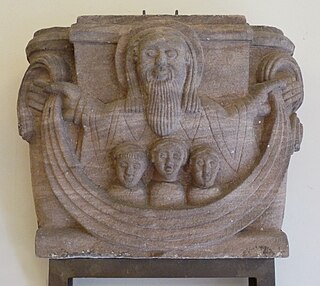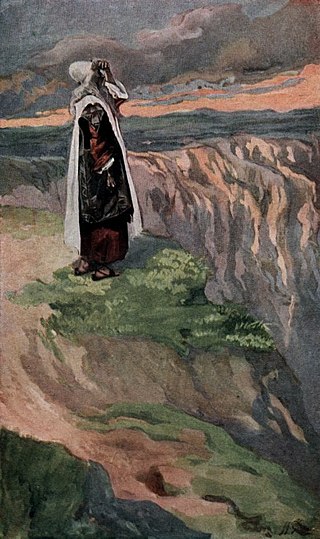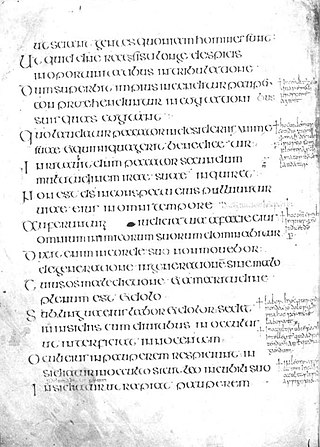Christian eschatology is a minor branch of study within Christian theology which deals with the doctrine of the "last things", especially the Second Coming of Christ, or Parousia. The word eschatology derives from two Greek roots meaning "last" (ἔσχατος) and "study" (-λογία) – involves the study of "end things", whether of the end of an individual life, of the end of the age, of the end of the world, or of the nature of the Kingdom of God. Broadly speaking, Christian eschatology focuses on the ultimate destiny of individual souls and of the entire created order, based primarily upon biblical texts within the Old and New Testaments. Christian eschatology looks to study and discuss matters such as death and the afterlife, Heaven and Hell, the Second Coming of Jesus, the resurrection of the dead, the rapture, the tribulation, millennialism, the end of the world, the Last Judgment, and the New Heaven and New Earth in the world to come.

Jewish eschatology is the area of Jewish theology concerned with events that will happen in the end of days and related concepts. This includes the ingathering of the exiled diaspora, the coming of the Jewish Messiah, the afterlife, and the resurrection of the dead. In Judaism, the end times are usually called the "end of days", a phrase that appears several times in the Tanakh.

The Last Judgment is a concept found across the Abrahamic religions and the Frashokereti of Zoroastrianism.

Enoch is a biblical figure and patriarch prior to Noah's flood, and the son of Jared and father of Methuselah. He was of the Antediluvian period in the Hebrew Bible.

The Book of Enoch is an ancient Jewish apocalyptic religious text, ascribed by tradition to the patriarch Enoch who was the father of Methuselah and the great-grandfather of Noah. The Book of Enoch contains unique material on the origins of demons and Nephilim, why some angels fell from heaven, an explanation of why the Genesis flood was morally necessary, and a prophetic exposition of the thousand-year reign of the Messiah. Three books are traditionally attributed to Enoch, including the distinct works 2 Enoch and 3 Enoch. None of the three are considered to be canonical scripture by most Jewish or Christian church bodies.

Apocalyptic literature is a genre of prophetical writing that developed in post-Exilic Jewish culture and was popular among millennialist early Christians. Apocalypse is a Greek word meaning "revelation", "an unveiling or unfolding of things not previously known and which could not be known apart from the unveiling".

In the Book of Ezekiel in the Hebrew Bible, New Jerusalem is Ezekiel's prophetic vision of a city centered on the rebuilt Holy Temple, to be established in Jerusalem, which would be the capital of the Messianic Kingdom, the meeting place of the twelve tribes of Israel, during the Messianic era. The prophecy is recorded by Ezekiel as having been received on Yom Kippur of the year 3372 of the Hebrew calendar.

In Judaism, the High Holy Days, also known as High Holidays or Days of Awe consist of:
- strictly, the holidays of Rosh Hashanah and Yom Kippur ;
- by extension, the period of ten days including those holidays, known also as the Ten Days of Repentance ; or,
- by a further extension, the entire 40-day penitential period in the Jewish year from Rosh Chodesh Elul to Yom Kippur, traditionally taken to represent the forty days Moses spent on Mount Sinai before coming down with the second ("replacement") set of the Tablets of Stone.

The Book of Moses, dictated by Joseph Smith, is part of the scriptural canon for some denominations in the Latter Day Saint movement. The book begins with the "Visions of Moses", a prologue to the story of the creation and the fall of man, and continues with material corresponding to the Joseph Smith Translation of the Bible's (JST) first six chapters of the Book of Genesis, interrupted by two chapters of "extracts from the prophecy of Enoch".

The Bosom of Abraham refers to the place of comfort in the biblical Sheol where the righteous dead await Judgment Day.

In Judaism, the Ten Days of Repentance are the first ten days of the Hebrew month of Tishrei, beginning with the Jewish holiday of Rosh Hashanah and ending with the conclusion of Yom Kippur. During this time Jews focus on taking stock of their lives, making amends with people and asking for their forgiveness, repenting for their sins and seeking out closeness with God. These days usually fall in September and/or early October.

Emor is the 31st weekly Torah portion in the annual Jewish cycle of Torah reading and the eighth in the Book of Leviticus. The parashah describes purity rules for priests, recounts the holy days, describes the preparations for the lights and bread in the sanctuary, and tells the story of a blasphemer and his punishment. The parashah constitutes Leviticus 21:1–24:23. It has the most verses of any of the weekly Torah portions in the Book of Leviticus, and is made up of 6,106 Hebrew letters, 1,614 Hebrew words, 124 verses and 215 lines in a Torah Scroll.
UntannehTokef, Unthanneh Toqeph, Un'taneh Tokef, or Unsanneh Tokef is a piyyut that has been a part of the Rosh Hashanah and Yom Kippur liturgy in some traditions of rabbinical Judaism for centuries. It introduces the Kedusha of Musaf for these days. In many communities, it is chanted while the Torah ark is open and the congregants are standing. It is the "central poem of the High Holy Day [of the Day of Atonement]." The ArtScroll machzor calls it "one of the most stirring compositions in the entire liturgy of the Days of Awe."

Pinechas, Pinchas, Pinhas, or Pin'has is the 41st weekly Torah portion in the annual Jewish cycle of Torah reading and the eighth in the Book of Numbers. It tells of Phinehas's killing of a couple, ending a plague, and of the daughters of Zelophehad's successful plea for land rights. It constitutes Numbers 25:10–30:1. The parashah is made up of 7,853 Hebrew letters, 1887 Hebrew words, 168 verses, and 280 lines in a Torah scroll.
The investigative judgment, or pre-Advent Judgment, is a unique Seventh-day Adventist doctrine, which asserts that the divine judgment of professed Christians has been in progress since 1844. It is intimately related to the history of the Seventh-day Adventist Church and was described by one of the church's pioneers Ellen G. White as one of the pillars of Adventist belief. It is a major component of the broader Adventist understanding of the "heavenly sanctuary", and the two are sometimes spoken of interchangeably.

The Seven Seals of God from the Bible's Book of Revelation are the seven symbolic seals that secure the book or scroll that John of Patmos saw in an apocalyptic vision. The opening of the seals of the document occurs in Rev Ch 5–8 and marks the Second Coming of the Christ and the beginning of The Apocalypse/Revelation. Upon the Lamb of God/Lion of Judah opening a seal on the cover of the book/scroll, a judgment is released or an apocalyptic event occurs. The opening of the first four Seals releases the Four Horsemen, each with his own specific mission. The opening of the fifth Seal releases the cries of martyrs for the "Word/Wrath of God". The sixth Seal prompts plagues, storms and other cataclysmic events. The seventh Seal cues seven angelic trumpeters who in turn cue the seven bowl judgments and more cataclysmic events.

Divine judgment means the judgment of God or other supreme beings and deities within a religion or a spiritual belief.

Psalm 9 is the ninth psalm of the Book of Psalms, beginning in English in the King James Version: "I will praise thee, O LORD, with my whole heart; I will shew forth all thy marvellous works." In Latin, it is known as "Confitebor tibi, Domine". The topic of the psalm is that the success of evil is only temporary, and in the end, the righteous will endure. Psalm 10 is considered part of Psalm 9 in the Greek Septuagint and in most pre-Reformation Christian Bibles. These two consecutive psalms have the form of a single acrostic Hebrew poem.

Psalm 69 is the 69th psalm of the Book of Psalms, beginning in English in the King James Version: "Save me, O God; for the waters are come in unto my soul". It is subtitled: "To the chief musician, upon Shoshannim, a Psalm of David". The Book of Psalms is part of the third section of the Hebrew Bible, and a book of the Christian Old Testament. In the slightly different numbering system used in the Greek Septuagint version of the Bible and in the Latin Vulgate, this psalm is Psalm 68. In Latin, it is known as "Salvum me fac Deus". It has 36 verses.

Rosh Hashanah is the New Year in Judaism. The biblical name for this holiday is Yom Teruah. It is the first of the High Holy Days, as specified by Leviticus 23:23–25, that occur in the late summer/early autumn of the Northern Hemisphere. Rosh Hashanah begins ten days of penitence culminating in Yom Kippur, as well as beginning the cycle of autumnal religious festivals running through Sukkot which end on Shemini Atzeret in Israel and Simchat Torah everywhere else.

















